Disclosure: This article contains affiliate links. We may earn a commission from purchases at no extra cost to you, which helps our travel content.
The first time I visited Marrakech was for a research project on natural dyes derived from regional flora—specifically the rich blues extracted from local indigo varieties. What began as scientific documentation quickly evolved into a profound appreciation for how natural elements and cultural practices intertwine in this ancient city. Marrakech isn't merely photogenic; it's a living laboratory where light, color, texture, and human activity create a visual symphony that challenges even the most experienced photographer. The city's terracotta walls don't simply reflect sunlight—they transform it, creating a warm glow that shifts throughout the day like a natural color calibration chart. As someone who approaches photography with both scientific precision and cultural curiosity, I've returned to Marrakech five times over the past decade, each visit revealing new layers of this multidimensional city. This guide combines my background in biological observation with practical photography advice for capturing the essence of Morocco's Red City during a week-long solo adventure.
Understanding Marrakech's Unique Light
The phenomenon that makes Marrakech so distinctive for photographers is what I call the 'ochre effect'—the interaction between North African sunlight and the city's distinctive red clay architecture. As a biologist, I find fascinating parallels between how light behaves in Marrakech and how it filters through a forest canopy, creating distinct microclimates of illumination.
The city experiences three distinct light phases daily, each offering unique photographic opportunities:
Golden Dawn (6:00-8:00 AM): The early morning light in Marrakech has a clarity that's unmatched. The red walls absorb the warm wavelengths and reflect a soft glow that's ideal for architectural photography. This is when the Koutoubia Mosque and the ancient medina walls reveal their most subtle textures.
Midday Contrast (10:00 AM-3:00 PM): While many photographers avoid midday light, in Marrakech, the high sun creates dramatic shadow patterns in the narrow derbs (alleyways) of the medina. The contrast between bright walls and deep shadows creates natural frames that emphasize the city's geometric architecture.
Magic Hour (5:00-7:00 PM): As the sun lowers, Marrakech transforms into a photographer's dream. The red clay walls radiate stored heat and light, creating what locals call 'l'heure bleue'—when the sky turns cobalt blue while the city glows amber. This 30-minute window after sunset is perfect for panoramic shots from rooftop terraces.
For capturing these distinct light conditions, I've found my variable ND filter invaluable. It allows me to control exposure in the bright Moroccan sun without changing aperture, particularly useful when shooting the dramatic light transitions in the Jemaa el-Fna square as it transforms from day market to evening food bazaar.
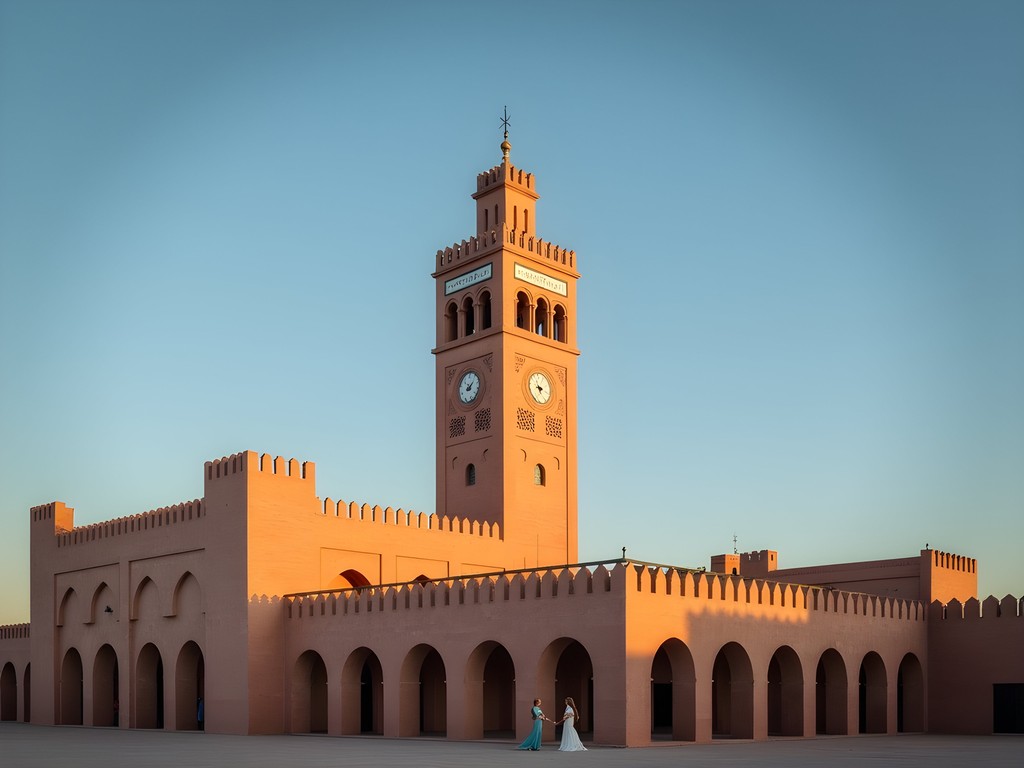
💡 Pro Tips
- Shoot the same location at different times of day to capture Marrakech's dramatic light transitions
- Use spot metering in the medina's narrow streets where bright walls and dark shadows create extreme contrast
- Position yourself facing north or south during midday to avoid direct sun while capturing the richest colors
Navigating the Medina: A Photographer's Approach
The ancient medina of Marrakech presents a fascinating paradox for photographers: it's simultaneously overwhelming in its sensory richness yet intimate in its hidden details. After multiple visits, I've developed a systematic approach that combines the methodical observation techniques I use in field biology with the cultural sensitivity needed to capture authentic moments.
Mapping Micro-Environments: Rather than attempting to photograph the entire medina in one go, I divide it into micro-environments—similar to how I might study different ecological niches in a coastal system. The spice markets, tanneries, metalworking quarters, and textile souks each have distinct visual characteristics, color palettes, and lighting conditions.
During my research on natural dyes, I spent three days documenting just the textile quarter, moving progressively deeper from the tourist-facing shops to the back-alley workshops where master dyers still use techniques unchanged for centuries. This systematic approach yields more cohesive photo series than random wandering.
The Ethics of Street Photography: Photographing people in the medina requires both cultural awareness and human connection. I never photograph anyone without permission, especially in Morocco where many hold religious or cultural reservations about being photographed. Instead of treating locals as subjects, I engage in conversation—often about my interest in traditional crafts—which frequently leads to invitations to photograph their work.
My most successful portraits came after spending time with an indigo dyer named Hassan, who initially declined being photographed but later invited me to document his process after we discussed the chemistry behind the fermentation vats he uses. These interactions often reveal photographic opportunities that casual tourists miss.
Technical Considerations: The medina's narrow streets create extreme contrast challenges. I typically use my mirrorless camera with its excellent dynamic range to handle the bright rooftops and shadowed alleyways. The silent shooting mode is invaluable for being discreet in markets and religious areas. For lenses, I primarily rely on a 23mm (35mm equivalent) for environmental context and a 56mm for portraits and details.
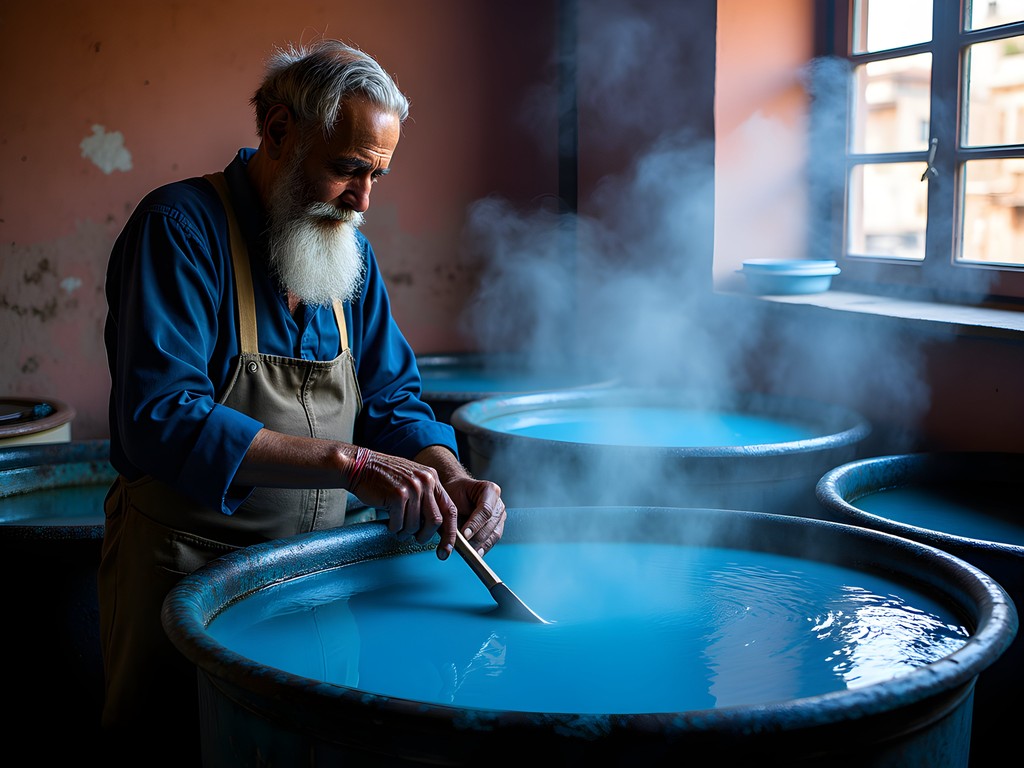
💡 Pro Tips
- Walk the same routes at different times to understand how light changes throughout the day
- Carry small prints of photos you've taken to give as gifts to shopkeepers or artisans you photograph
- Use a cross-body camera strap rather than a neck strap to keep your equipment secure while navigating crowded areas
Architectural Photography Beyond the Postcard Shots
Marrakech's architecture tells the story of Morocco's diverse cultural influences—Berber, Arab, Andalusian, and French colonial—creating a visual vocabulary that rewards the observant photographer. While most visitors capture the obvious landmarks, understanding the architectural elements and their functions reveals more compelling compositional opportunities.
Reading the Riads: The traditional Moroccan riad (courtyard house) exemplifies biomimetic architecture—design that emulates natural systems. During my third visit to Marrakech, I stayed at Riad Yasmine specifically to study how these structures create their own microclimate through careful orientation to the sun, strategic ventilation, and water features that provide evaporative cooling.
Photographically, riads offer lessons in symmetry and framing. The central courtyard typically features a four-part garden (chahar bagh) representing the four elements—a concept I found remarkably similar to ecosystem diagrams in biology. For the best photographs, position yourself at balcony level looking down to capture the geometric patterns, or shoot upward from the courtyard to frame the sky with ornate railings.
Decoding Decorative Elements: Moroccan architecture uses three primary decorative elements, each requiring different photographic approaches:
-
Zellij (geometric tile mosaics): These intricate patterns are best captured with even lighting and a macro lens to reveal the mathematical precision.
-
Muqarnas (honeycomb vaulting): These three-dimensional stalactite-like ceiling elements create complex shadows. I photograph them during different times of day to capture how light transforms their appearance.
-
Mashrabiya (carved wooden screens): These latticed windows create fascinating light patterns that change throughout the day—similar to how forest canopies filter sunlight.
For architectural detail work, I rely on my travel tripod which allows for precise framing and longer exposures in dimly lit palace interiors. Its compact size doesn't attract attention in busy tourist sites, yet it provides the stability needed for the sharp detail work that architectural photography demands.
One of my favorite techniques is to create typologies—systematic studies of similar architectural elements across different buildings. For instance, I've documented dozens of different doorway designs throughout the medina, revealing how small variations reflect the status, occupation, and cultural background of the original inhabitants.
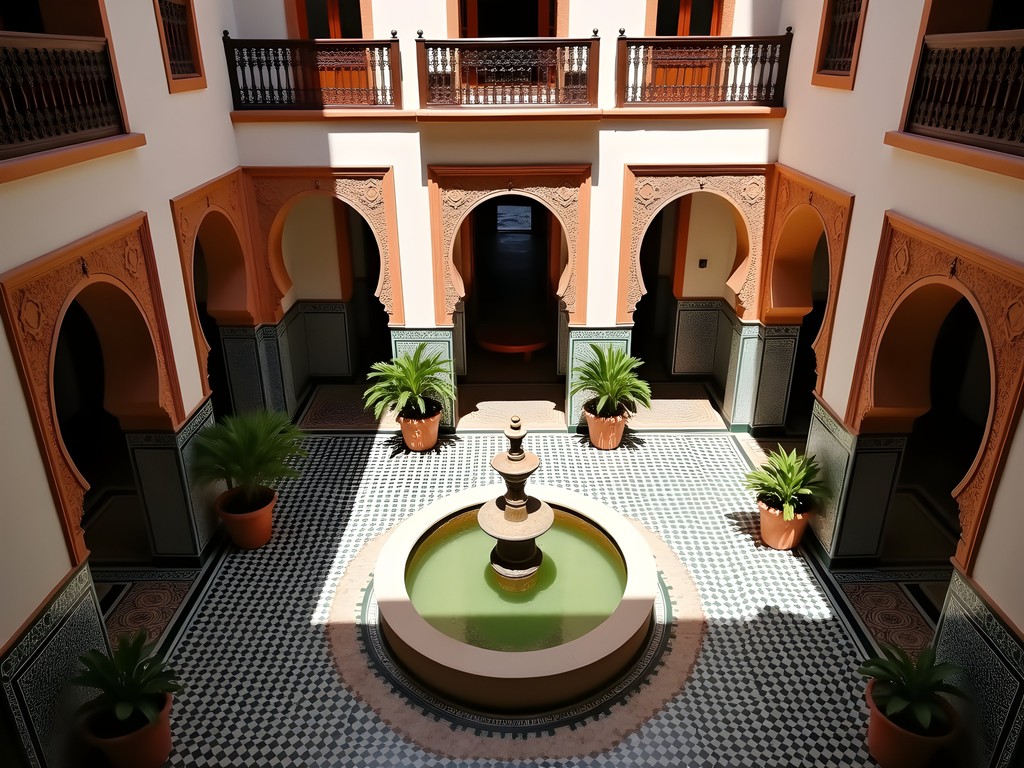
💡 Pro Tips
- Look for repeating patterns and symmetry in Islamic architecture—they create natural compositional elements
- Use a person (with permission) to provide scale in photographs of grand spaces like the Bahia Palace
- Visit major monuments like Ben Youssef Madrasa early or late in the day to avoid crowds and harsh lighting
Cultural Festivals and Celebrations Through the Lens
Timing your visit to coincide with Marrakech's cultural festivals provides unique photographic opportunities that reveal deeper layers of Moroccan society. My research on traditional crafts has frequently aligned with local celebrations, offering insights into how contemporary Moroccans maintain connections to their heritage through communal events.
Capturing Movement and Emotion: During the annual Marrakech Popular Arts Festival (typically held in July), the city comes alive with traditional music, dance, and theatrical performances. Photographing these dynamic events requires technical adaptability and cultural context.
For the whirling Gnawa performers, whose trance-like dances reflect spiritual traditions brought from sub-Saharan Africa, I've found that slightly slower shutter speeds (around 1/15 sec) with panning techniques capture both movement and emotion. This approach creates images that convey the kinetic energy while maintaining enough sharpness in the performers' faces to convey their expressions.
Festival Lighting Challenges: Many celebrations continue into evening, presenting challenging mixed lighting conditions. The annual candlelit processions during Mawlid (celebration of the Prophet's birthday) create particularly complex scenes with multiple light sources at different color temperatures.
For these situations, I use my low-light prime lens which allows me to work in minimal light without flash—important for maintaining the atmosphere and respecting the religious nature of many events. I typically shoot in RAW format with auto white balance, knowing I'll need to make selective color temperature adjustments in post-processing.
Storytelling Through Sequences: Rather than seeking single perfect shots, I approach festival photography as a documentary scientist might—creating visual sequences that show processes and relationships. During Eid al-Fitr celebrations last year, I created a photo series documenting how a single family prepared special foods, exchanged gifts, and participated in community prayers, revealing the interplay between domestic and public expressions of cultural identity.
This approach requires patience and relationship-building. I typically spend time with families or artisans before major events, explaining my interest in documenting traditional practices. These connections often lead to invitations that provide insider access to moments tourists rarely witness—like the predawn preparation of communal tajines or the intricate henna application ceremonies before weddings.
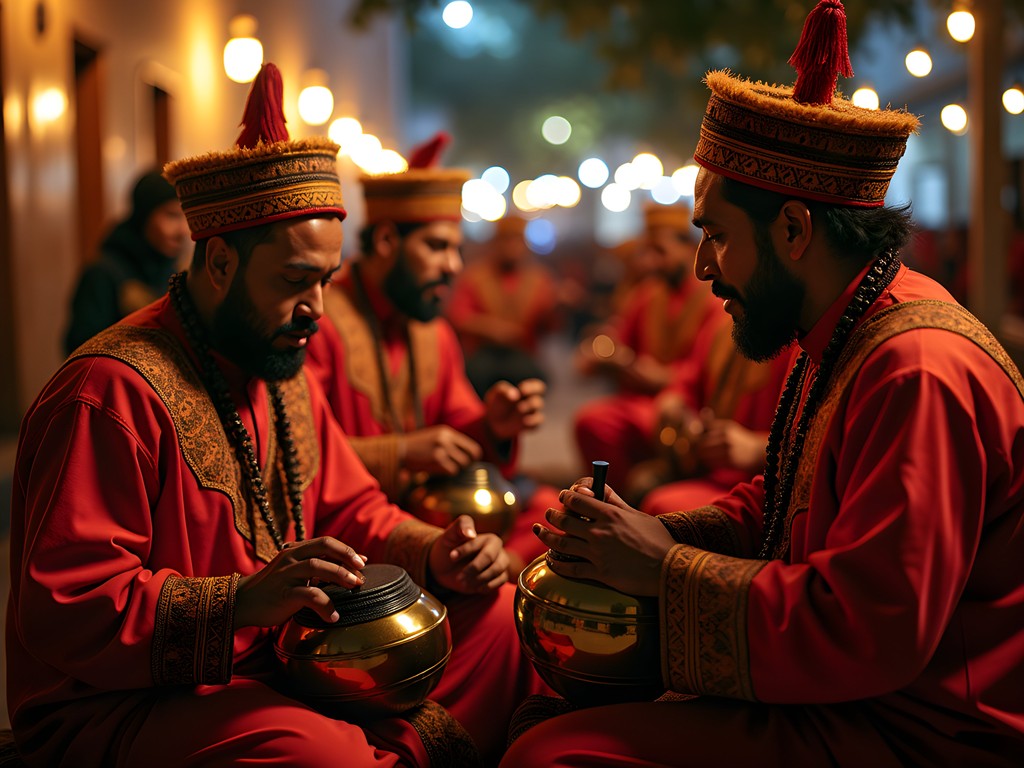
💡 Pro Tips
- Research cultural events before your trip and contact local cultural centers for accurate schedules
- Learn basic Arabic phrases related to asking permission for photographs during celebrations
- Create both wide establishing shots and intimate details to tell complete stories of cultural events
Food Photography: Documenting Morocco's Culinary Heritage
As both a scientist and a cultural documentarian, I find food photography in Marrakech particularly fascinating. The city's cuisine represents a complex cultural history where ingredients and techniques reveal migration patterns, climate adaptation, and social hierarchies. Through my lens, I seek to capture not just attractive dishes but the ecological and cultural stories they tell.
Market-to-Table Documentation: One of my favorite photographic projects in Marrakech was following the journey of ingredients from the Mellah (Jewish quarter) markets through preparation to final presentation. This sequential approach reveals connections between agriculture, commerce, and cuisine that single food shots miss.
Start in the markets early (7-9 AM) when produce is freshest and vendors are arranging their displays. The geometric patterns of stacked spices and the textural contrasts of fruits against woven baskets create compelling compositions. Use natural light and avoid flash, which can disturb vendors and flatten the rich textures.
Cooking Process as Visual Narrative: Moroccan cooking techniques—particularly the use of tagines (conical clay cooking vessels)—demonstrate principles of thermal efficiency that evolved in response to resource scarcity. When photographing food preparation, I look for moments that illustrate these adaptations: the careful management of charcoal heat, the collection of condensation inside tagine lids, the precise layering of ingredients to ensure proper steam circulation.
Many riads and cooking schools offer classes where you can document the entire process from ingredient selection to final plating. I've found that my portable LED light provides gentle fill light for kitchen scenes without being intrusive or altering the natural color of foods.
Styling and Composition Considerations: Moroccan cuisine comes with built-in visual drama—the theatrical unveiling of a tagine, the geometric arrangement of couscous garnishes, the color contrast of preserved lemons against olive-studded dishes. Rather than rearranging food (which can be culturally insensitive), I position myself to find natural compositions.
For tabletop scenes, seek out locations with interesting contextual elements: traditional brass tables, hand-painted ceramics, or architectural features that place the food in cultural context. I often use a 60mm macro lens for food details, allowing me to highlight textural elements like the glistening honey on chebakia pastries or the intricate patterns of bastilla pastry.
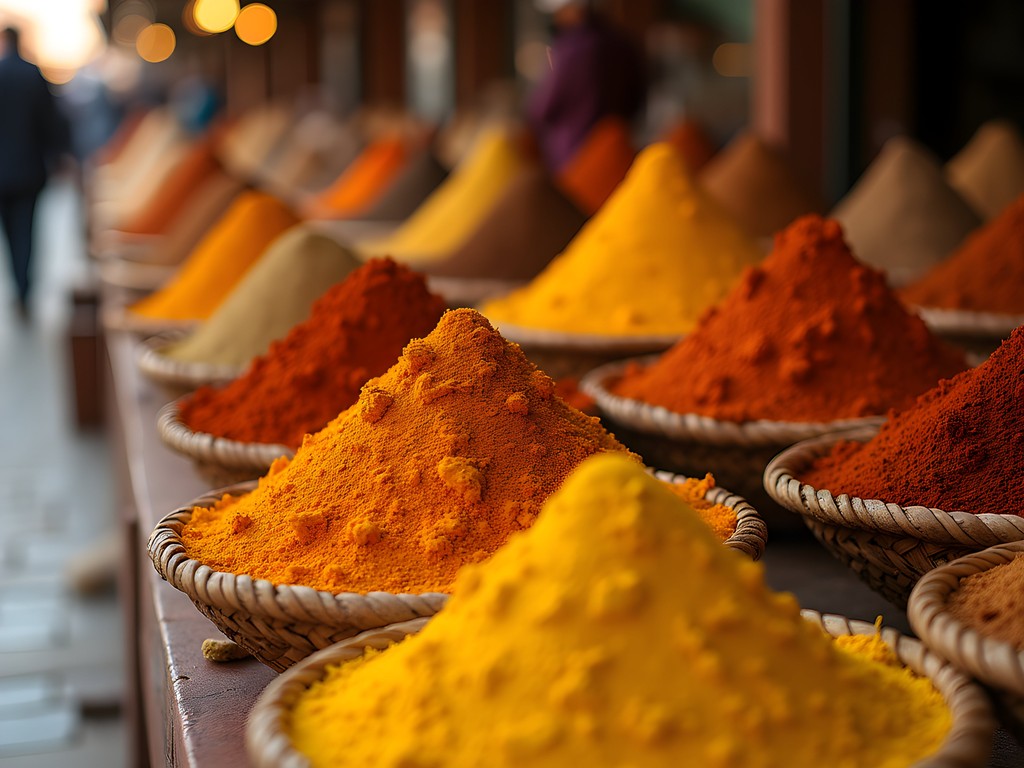
💡 Pro Tips
- Always ask permission before photographing vendors or their products in markets
- Use a small aperture (f/8-f/11) when photographing spice displays to maintain depth of field across the colorful mounds
- Learn the stories behind traditional dishes to capture meaningful moments in their preparation and presentation
Essential Photography Gear for Marrakech
After multiple photography trips to Marrakech, I've refined my gear list to balance capability with portability—particularly important for solo travelers navigating the medina's narrow passages. My approach combines scientific precision with practical field experience.
Camera Systems and Protection: Marrakech presents unique challenges—dust is ubiquitous, temperature fluctuations are extreme, and the medina's tight spaces require adaptability. I've found mirrorless systems offer the best compromise between image quality and discretion.
My primary camera is a weather-sealed mirrorless body with excellent dynamic range to handle the contrast between bright skies and shadowed alleyways. I protect it with a lightweight silicone cover and carry lens cleaning supplies daily, as the fine dust is persistent.
For those concerned about carrying expensive equipment, I recommend the anti-theft camera bag which features slash-proof construction and locking zippers. Its unassuming appearance doesn't advertise expensive contents, yet it provides excellent protection and comfortable weight distribution during long shooting days.
Lens Selection Strategy: Rather than carrying an extensive lens collection, I've found three key lenses cover most situations in Marrakech:
- A fast 35mm equivalent prime for street scenes and environmental portraits
- A 50mm equivalent for general purpose and low light situations
- A 90mm equivalent for architectural details and discrete portraits
This trinity provides versatility without excess weight. The fixed focal lengths also encourage more thoughtful composition and less conspicuous operation than zoom lenses.
Specialized Equipment: Based on Marrakech's specific photographic opportunities, I recommend a few specialized items:
-
Polarizing filter: Essential for managing reflections on tile work and enhancing the rich blue of the sky against terracotta buildings
-
Lightweight travel tripod: Necessary for blue hour cityscapes and interior architectural work where light levels are low
-
Dust blower and microfiber cloths: The medina's environment makes daily sensor and lens cleaning essential
-
Portable external hard drive: I back up images daily, as the photographic opportunities are too valuable to risk loss
A final consideration for solo travelers: I use a cross-body camera strap that keeps my equipment secure against my body while moving through crowded areas, and I carry a small shoulder bag rather than a obvious camera bag when working in busy markets.
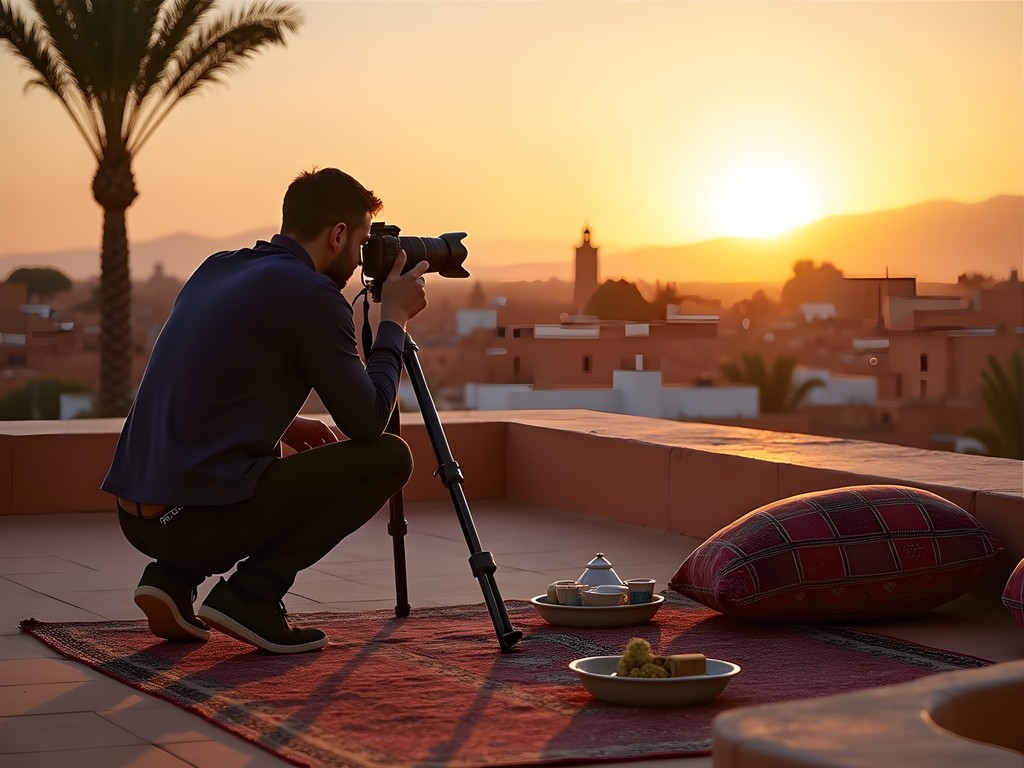
💡 Pro Tips
- Carry your memory cards in a waterproof case—unexpected rain and water features in riads can create humidity issues
- Bring twice as many batteries as you think you'll need—the heat in Marrakech depletes them faster than usual
- Consider a camera with dual card slots for automatic backups of irreplaceable travel images
Final Thoughts
Photographing Marrakech is not merely about collecting beautiful images—it's about developing a visual literacy that reveals the interconnections between environment, culture, and history. As both a scientist and a cultural observer, I've found that my most compelling photographs emerged when I slowed down enough to understand the systems behind what I was seeing: how light interacts with ancient architecture, how traditional crafts adapt to contemporary markets, how culinary traditions reflect ecological adaptations. The Red City rewards those who approach it with curiosity and respect, revealing its layers gradually to the patient observer. Whether you're documenting the geometric precision of Islamic architecture or the ephemeral moments of daily life in the medina, remember that your photographs are not just souvenirs but contributions to our understanding of a living cultural heritage. I invite you to approach Marrakech with both technical preparation and cultural openness—and to share the visual stories you discover with the same care with which they were entrusted to you.
✨ Key Takeaways
- Understanding Marrakech's unique light conditions at different times of day transforms ordinary scenes into extraordinary photographs
- Building relationships with locals leads to photographic opportunities that casual tourists miss entirely
- Approaching photography systematically—by neighborhood, theme, or cultural practice—yields more cohesive and meaningful visual stories
- Respecting cultural sensitivities around photography creates positive experiences and more authentic images
📋 Practical Information
Best Time to Visit
Fall (September-November)
Budget Estimate
$100-150/day for mid-range accommodations, meals, and photography activities
Recommended Duration
7 days minimum
Difficulty Level
Intermediate
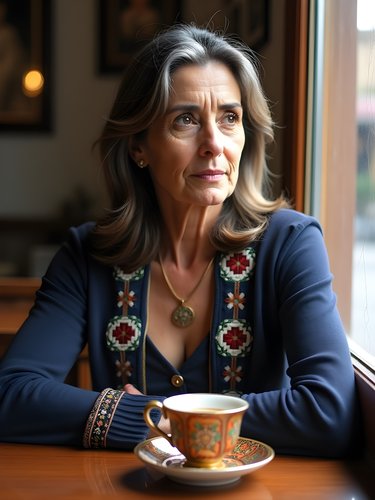
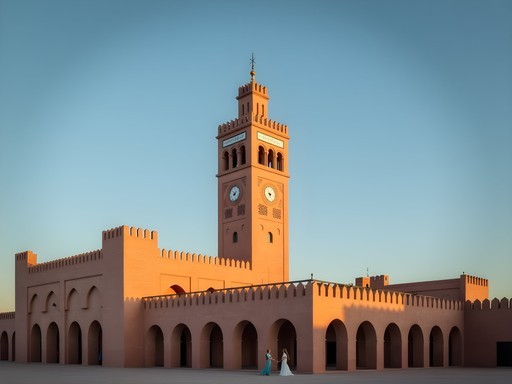
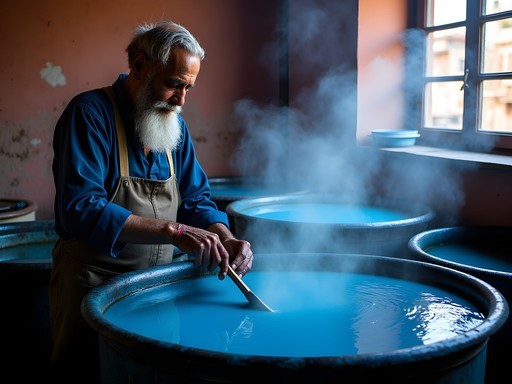
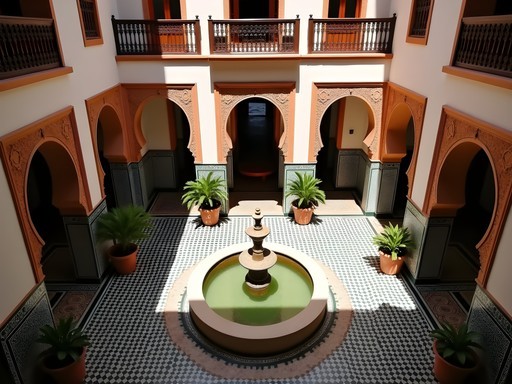
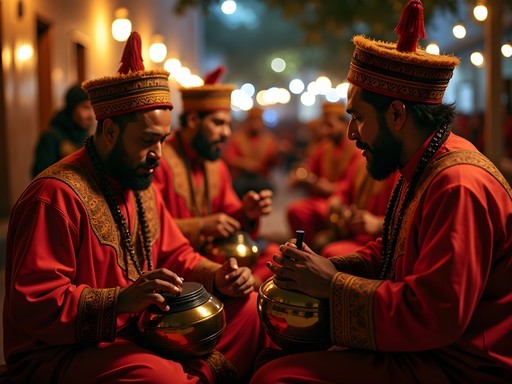

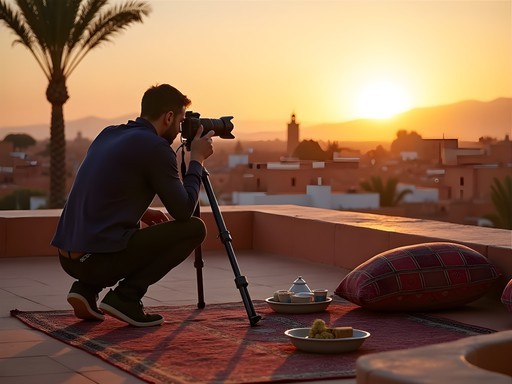


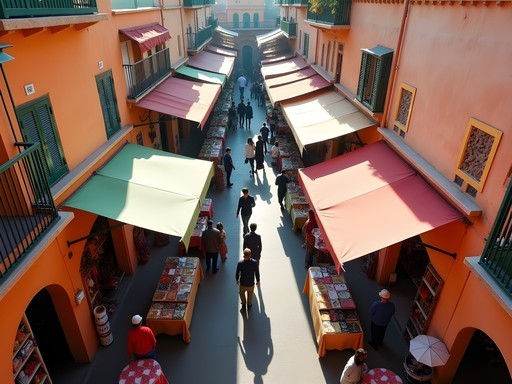
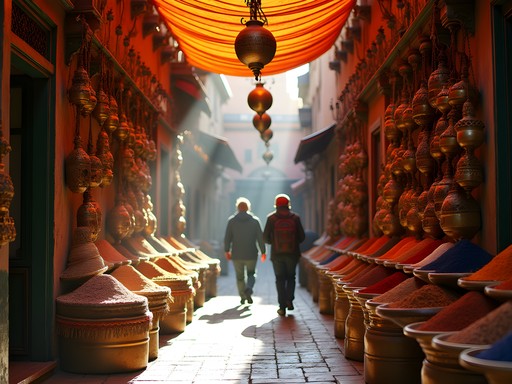
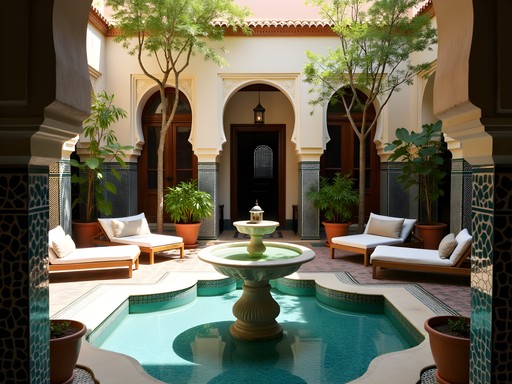
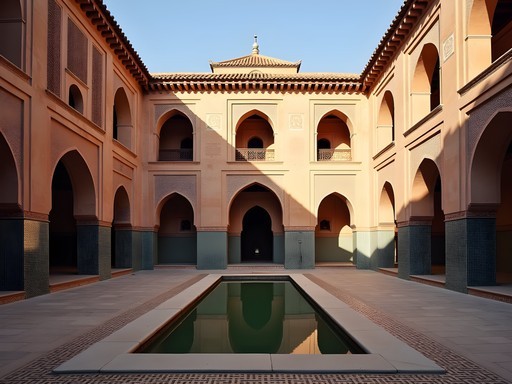

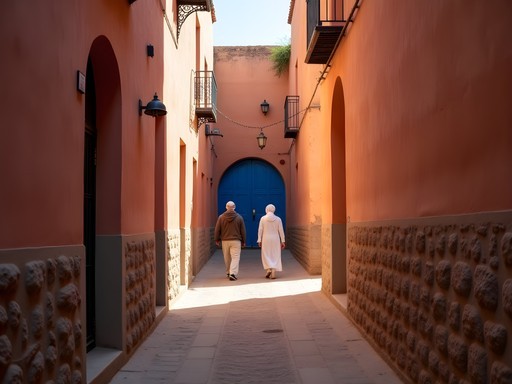


Comments
Hunter Thompson
Just brilliant, Taylor! Your section on understanding Marrakech's unique light is GOLD! I've visited during different seasons and can confirm the dramatic shift between summer's harsh contrasts and winter's softer glow. For anyone planning a photography trip, I'd recommend scheduling around November or March for that perfect balance. The way you've broken down approaching the medina section-by-section is exactly how I tackled it on my last visit - makes the whole experience less overwhelming and more productive. One thing I'd add: the rooftop cafés around sunset offer incredible panoramic opportunities that showcase the city's scale against the Atlas Mountains backdrop. Can't wait to apply your festival photography tips when I return for the Rose Festival next year!
blueguy
Just got back from Marrakech and used this guide - spot on about the morning light in Jardin Majorelle! But heads up to anyone going - the Medina gets PACKED by 10am. I started at 7am and had some places almost to myself. Also, the locals are way more chill about photos early before the tourist crowds show up. Found an amazing spice seller who let me photograph his entire process after I bought some saffron from him. One thing missing from the guide - be prepared for extreme contrast between sunny and shaded areas in the medina streets!
Kimberly Murphy
That contrast issue is so real! Did you bracket your exposures or how did you handle it?
blueguy
Mostly shot in RAW and recovered in post. But for some scenes I did 3-bracket HDR. The dust made sensor cleaning a daily ritual though!
wanderlustblogger5403
Great post! I'm planning a trip to Marrakech this winter and wondering what camera setup you used for those amazing medina shots? I've got a mirrorless camera but not sure which lenses to bring for those narrow alleyways and indoor market scenes.
tripblogger
Not the author but I used a 35mm prime when I was there last year - perfect for the tight spaces and low light in the souks!
wanderlustblogger5403
That's super helpful, thanks! Did you have any issues with dust getting in your camera? I've heard that can be a problem there.
tripblogger
Wow those shots of Bahia Palace are STUNNING!! The way you captured the tile work with that soft morning light is just perfect. Definitely adding this to my bucket list!
adventurepro
Taylor's section on architectural photography beyond the postcard shots helped me so much! Focusing on details like the intricate tile work and doorways got me some of my favorite images from Morocco.
sunnyhero
That shot of the tanneries is absolutely stunning! How did you deal with the smell though? 😂
Taylor Hassan
Haha! The mint sprig they give you helps a little, but honestly I was too focused on getting the shot to notice after a while!
Kimberly Murphy
Taylor, this guide is EXACTLY what I needed! I'm heading to Marrakech next month for a photography project and was struggling with how to approach the medina ethically. Your tips about asking permission before photographing locals and the best times for that golden light are gold dust. I visited Chefchaouen last year and the blue city has such different lighting challenges compared to the 'red city' vibes. Did you find any particular neighborhood especially photogenic during the late afternoon hours? I'm planning to focus on architectural details and doorways specifically.
blueguy
The Jewish Quarter has amazing doorways! Go around 4pm when the light hits them just right.
Kimberly Murphy
Thanks for the tip! Adding it to my list. Did you have any issues with locals not wanting to be photographed there?
blueguy
Mixed. Some want money, others are cool if you chat first. Just be respectful and you'll be fine!
sunsetexplorer
Heading there next week! Any tips for photographing Jardin Majorelle without the crowds?
Hunter Thompson
Not Taylor but I've been 3 times - be there 30 mins before opening and head straight to the back of the garden. Most people linger at the entrance for photos. Also, the light is best in the morning before the harsh midday sun hits!
sunsetexplorer
Perfect, thanks for the insider tip!
Hunter Thompson
Just got back from Marrakech last month and your guide would have saved me so much trial and error! The section on 'Understanding Marrakech's Unique Light' is absolutely crucial - that transition from blinding sunlight to the dark covered souks killed half my shots until I figured out how to manage my exposure quickly. For anyone heading there, practice switching settings without looking at your camera! Also, the rooftop cafes around sunset offer incredible panoramas of the city with the Atlas Mountains in the background. The Café des Épices was my go-to spot - just order a mint tea and camp out for the golden hour. Brilliant guide, mate!
MoroccoFan
If anyone's heading there soon, the Festival of Roses in May is amazing for photography! Not in Marrakech itself but worth the day trip.
TravelWithKids
Is the festival kid-friendly? Planning a family trip next spring.
MoroccoFan
Absolutely! My kids loved it - lots of colors, music, and the rose petal throwing is magical for photos of the little ones.
Venture X
Premium card with 2X miles, $300 travel credit, Priority Pass